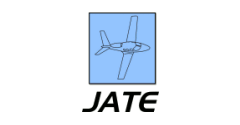Abstract
Background. For general aviation (GA) pilots, operations in instrument meteorological conditions (IMC) carry an elevated risk of a fatal accident. As to whether a general aviation flight can be safely undertaken, aerodrome-specific forecasts (TAF, LAMP) provide guidance. Although LAMP forecasts are more common for GA-frequented aerodromes, nevertheless, the FAA recommends that for such aerodromes (and for which a TAF is not issued) the airman uses the TAF generated for the geographically closest airport for pre-flight weather evaluation. Herein, for non-TAF-issuing airports, the LAMP (sLAMP) predictive accuracy for visual (VFR) and instrument (IFR) flight rules flight category was determined.
Method. sLAMP accuracy was evaluated over 12 months using the fractions of forecasts which were correct or false alarms. Statistical differences employed Chi-Square/Fisher Exact tests.
Results. sLAMP forecasts (n=570) across 43 states were accrued. The fraction of correct sLAMP forecasts for VFR (0.53) and IFR (0.68) exceeded (p
Conclusion. Our findings indicate the forecast superiority of the satellite-LAMP at non-TAF-issuing airports compared with the TAF generated at a proximate aerodrome.
Practical Application. For non-TAF-issuing sLAMP airports, these findings argue for greater integration of the latter tool in pre-flight weather briefings for general aviation operations.
Recommended Citation
Boyd, Douglas D. and Guinn, Thomas A.
(2021)
"A Comparison of the Localized Aviation MOS Program (LAMP) and Terminal Aerodrome Forecast (TAF) Accuracy for General Aviation,"
Journal of Aviation Technology and Engineering:
Vol. 10:
Iss.
1, Article 3.
Available at: https://doi.org/10.7771/2159-6670.1230
Included in
Atmospheric Sciences Commons, Categorical Data Analysis Commons, Other Earth Sciences Commons


